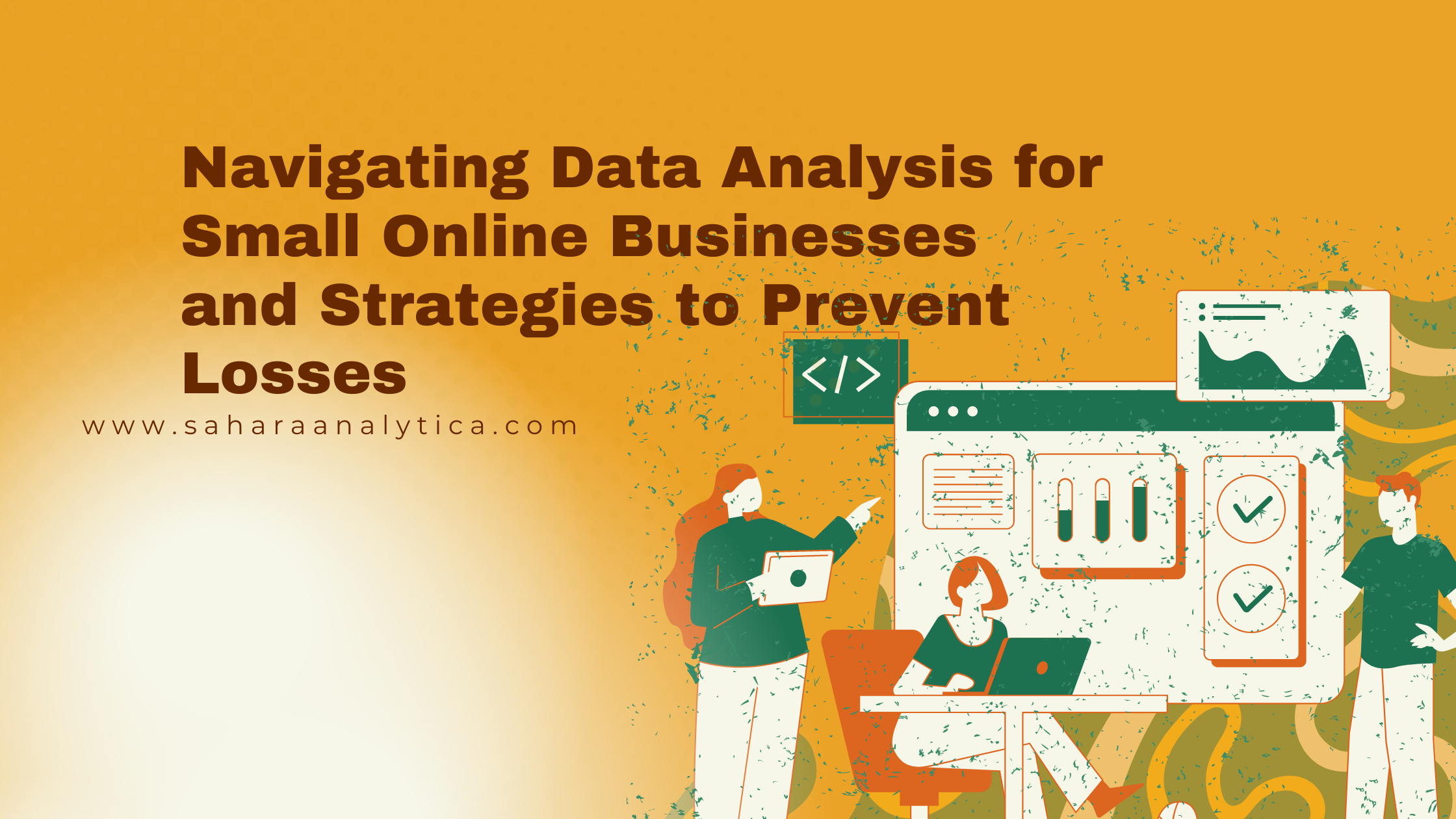In the fast-paced world of e-commerce, data analysis plays a pivotal role in guiding decision-making and driving business growth. For small online businesses, harnessing the power of data analytics can mean the difference between success and failure. By leveraging insights derived from data analysis, businesses can identify trends, uncover opportunities, and mitigate risks to avoid losses and maximize profitability. In this blog post, we’ll explore practical strategies for conducting data analysis in a small online business to safeguard against potential losses and drive sustainable growth.
1. Define Key Performance Indicators (KPIs): The first step in effective data analysis is to define clear and actionable Key Performance Indicators (KPIs) that align with your business objectives. These KPIs may include metrics such as website traffic, conversion rate, average order value, customer acquisition cost, and customer lifetime value. By tracking and analyzing these KPIs regularly, small online businesses can gain insights into the health of their operations and identify areas for improvement.
2. Collect and Organize Data: Next, small online businesses should establish systems for collecting and organizing relevant data from various sources, including website analytics, sales transactions, customer interactions, and marketing campaigns. This may involve implementing analytics tools such as Google Analytics, e-commerce platforms, customer relationship management (CRM) systems, and email marketing software. By centralizing data collection and ensuring data accuracy and integrity, businesses can generate reliable insights for informed decision-making.
3. Analyze Customer Behavior: Understanding customer behavior is crucial for small online businesses to optimize their offerings and enhance the customer experience. By analyzing customer data such as browsing patterns, purchase history, and feedback, businesses can identify trends and preferences, segment their audience, and tailor marketing strategies accordingly. Additionally, analyzing customer churn and retention metrics can help businesses identify at-risk customers and implement proactive retention strategies to minimize losses.
4. Monitor Inventory and Supply Chain: For e-commerce businesses selling physical products, effective inventory management is essential for minimizing losses due to stockouts, overstocking, or obsolete inventory. By analyzing inventory turnover rates, stock levels, and supplier performance metrics, businesses can optimize their inventory management processes, streamline their supply chain, and minimize carrying costs. Additionally, forecasting demand and monitoring sales trends can help businesses anticipate fluctuations in demand and adjust their inventory levels accordingly.
5. Detect Fraud and Security Threats: Small online businesses are often targets for fraudsters and cybercriminals seeking to exploit vulnerabilities in their systems. By implementing fraud detection mechanisms and analyzing transaction data for suspicious patterns or anomalies, businesses can proactively identify and mitigate fraudulent activities. Additionally, investing in robust cybersecurity measures such as encryption, multi-factor authentication, and regular security audits can help protect sensitive data and prevent costly security breaches.
Conclusion: In conclusion, data analysis is a powerful tool for small online businesses to mitigate losses, drive growth, and stay competitive in the digital marketplace. By defining KPIs, collecting and organizing data, analyzing customer behavior, monitoring inventory, and detecting fraud and security threats, businesses can gain actionable insights that inform strategic decision-making and safeguard against potential losses. By embracing data-driven practices and leveraging insights derived from data analysis, small online businesses can navigate challenges, capitalize on opportunities, and thrive in the dynamic world of e-commerce.
